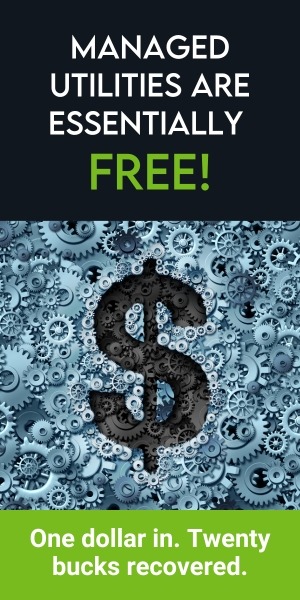Utilities are background noise.
They’re an unpleasant necessity. An overhead cost. A thing to be accomplished so that the real work can happen.
Right?
You think of utilities, you think of a bill. A blurry collection of expenses. You pay it, you move on, and business gets busy.
Which is a shame, because hiding inside and behind that bill is a path toward a massive body of investment funds, positive consumer relations, and a wiser, leaner business.
You watch your data. The world watches you.
By “the world,” we mean investors and customers (or if you’re in the multifamily space, residents).
In a Cone Communications study on changing consumer/company expectations, 79% of surveyed U.S. citizens indicated that they expect businesses to show year-over-year improvements to their social responsibility infrastructure. As millennials become a sturdier and more entrenched part of the workforce, that pressure will only mount.
Enhancements to that social responsibility include ESG positive retrofits, tangible investments in environmentally friendly behavioral shifts, and benchmarked reductions in utility waste—all of which are initially and consistently guided by the data your utility bills generate each month.
A path to 6 trillion dollars.
The grassroots pressure of widespread consumers may be an emerging trend, but the importance of data-backed sustainability efforts is a historically entrenched expectation of investors. All told, there are an estimated $6,000,000,000,000 (that’s 12 zeroes), of untapped investment funds set aside by investors to be used exclusively for environmentally sound investments.
Goby, a longtime veteran in the commercial sustainability sector, has communicated again and again the overt position of investors on sustainability:
- Investing in green initiatives builds long-term wealth
- Companies that pay attention to their ESG impact are more diligent stewards of their overall business
- Businesses who track and enhance their utilities pose less catastrophe-related risk than those who don’t
Throw a dart at the internet, navigate to the About Us section of the first investment firm or brokerage you land on, and you’ll almost certainly see a black-and-white proclamation valuing the criticality of sustainability in their investment strategy. Everyone from major players like Vanguard and Blackrock to smaller investment firms with emerging partnership opportunities have a written and historical tendency to favor businesses that can show a dedication to ESG.
First steps? Just paying attention.
The very act of tracking and benchmarking your utilities data makes you measurably more sustainable.
A study by the EPA (Environmental Protection Agency) showed that businesses who simply took the time to consistently review and track their utilities usage enjoyed a 7% decrease in utilities usage over 3 years. By assigning resources each month to measure your utilities usage stats, you can achieve an environmentally sustainable drop in energy and gas consumption that translates into a whole lot more dollars than you probably expect—no expensive retrofits or formal audits initially required.
Why? Because looking makes you careful. At a high level, tracking data makes it easy to spot company-wide wasteful behaviors and correct them. At a more precise level, it yields margin that can translate directly into growth. And on a globally responsible ESG level, it makes you one of the good guys.
The real work: objective audits and measurable retrofits.
Ordering an audit on sustainability opportunities in your utilities infrastructure is much more complex than tracking your usage data from month to month. And tracking down a company that’s willing to provide an unbiased review is even harder. Trade companies tend to primarily or exclusively audit the aspects of your infrastructure relevant to their services (e.g., lighting companies are more likely to review your lighting energy consumption, HVAC companies are most likely to audit usage associated with your heating and cooling, etc.).
Which is why third-party companies who rely on a standardized auditing process—divorced from commercial service offerings—are so crucial. ASHRAE audits, for instance, are an industry-recognized, scalably-tiered way to identify sustainability retrofit opportunities with a consistent, apples-to-apples review process.
Once you’ve identified and implemented your retrofits, a utility management company like us (Conservice) can track your return on investment by comparing usage data against year-over-year benchmarks and facilitate the creation of sustainability dashboards and reports that you can use to attract new investors, create consumer confidence, and ultimately grow your margins enough to commit to even more business-enhancing retrofits.
In sum, any business responsible for the utilities usage of properties can break into a 6-trillion dollar ocean of investment opportunities by:
Watching their data > Purchasing objective audits > Retrofitting for sustainability > Tracking retrofit ROI’s > And presenting their successful initiatives to investors.
Let Conservice do it for you.
Honest to goodness, the easiest way to accomplish a task is to let a capable partner accomplish it for you.
Our software and service teams will audit and benchmark your utilities data. Our sustainability offerings can facilitate the completion of objective ASHRAE audits, and after you finish your retrofits, our sustainability experts will get busy carefully tracking and reporting on the usage and monetary benefits you’ve worked so hard to achieve.
If you have questions about using your utilities data to connect with long-term partners and investors, reach out to our experts.






